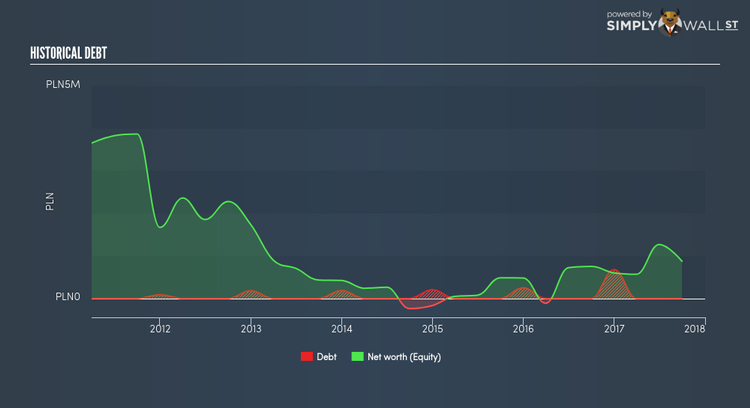What You Must Know About Suntech SA.’s (WSE:SUN) 13.36% ROE

Suntech SA. (WSE:SUN) generated a below-average return on equity of 13.36% in the past 12 months, while its industry returned 15.08%. Though SUN’s recent performance is underwhelming, it is useful to understand what ROE is made up of and how it should be interpreted. Knowing these components can change your views on SUN’s below-average returns. Metrics such as financial leverage can impact the level of ROE which in turn can affect the sustainability of SUN’s returns. Let me show you what I mean by this. View our latest analysis for Suntech
What you must know about ROE
Return on Equity (ROE) weighs Suntech’s profit against the level of its shareholders’ equity. For example, if the company invests PLN1 in the form of equity, it will generate PLN0.13 in earnings from this. While a higher ROE is preferred in most cases, there are several other factors we should consider before drawing any conclusions.
Return on Equity = Net Profit ÷ Shareholders Equity
Returns are usually compared to costs to measure the efficiency of capital. Suntech’s cost of equity is 8.35%. Suntech’s ROE exceeds its cost by 5.01%, which is a big tick. Some of its peers with higher ROE may face a cost which exceeds returns, which is unsustainable and far less desirable than Suntech’s case of positive discrepancy. ROE can be broken down into three different ratios: net profit margin, asset turnover, and financial leverage. This is called the Dupont Formula:
Dupont Formula
ROE = profit margin × asset turnover × financial leverage
ROE = (annual net profit ÷ sales) × (sales ÷ assets) × (assets ÷ shareholders’ equity)
ROE = annual net profit ÷ shareholders’ equity
The first component is profit margin, which measures how much of sales is retained after the company pays for all its expenses. Asset turnover reveals how much revenue can be generated from Suntech’s asset base. The most interesting ratio, and reflective of sustainability of its ROE, is financial leverage. Since ROE can be artificially increased through excessive borrowing, we should check Suntech’s historic debt-to-equity ratio. Currently, Suntech has no debt which means its returns are driven purely by equity capital. This could explain why Suntech’s’ ROE is lower than its industry peers, most of which may have some degree of debt in its business.
Next Steps:
ROE is one of many ratios which meaningfully dissects financial statements, which illustrates the quality of a company. Even though Suntech returned below the industry average, its ROE comes in excess of its cost of equity. Its appropriate level of leverage means investors can be more confident in the sustainability of Suntech’s return with a possible increase should the company decide to increase its debt levels. Although ROE can be a useful metric, it is only a small part of diligent research.
For Suntech, there are three important factors you should further research:
Financial Health: Does it have a healthy balance sheet? Take a look at our free balance sheet analysis with six simple checks on key factors like leverage and risk.
Valuation: What is Suntech worth today? Is the stock undervalued, even when its growth outlook is factored into its intrinsic value? The intrinsic value infographic in our free research report helps visualize whether Suntech is currently mispriced by the market.
Other High-Growth Alternatives : Are there other high-growth stocks you could be holding instead of Suntech? Explore our interactive list of stocks with large growth potential to get an idea of what else is out there you may be missing!
To help readers see pass the short term volatility of the financial market, we aim to bring you a long-term focused research analysis purely driven by fundamental data. Note that our analysis does not factor in the latest price sensitive company announcements.
The author is an independent contributor and at the time of publication had no position in the stocks mentioned.


